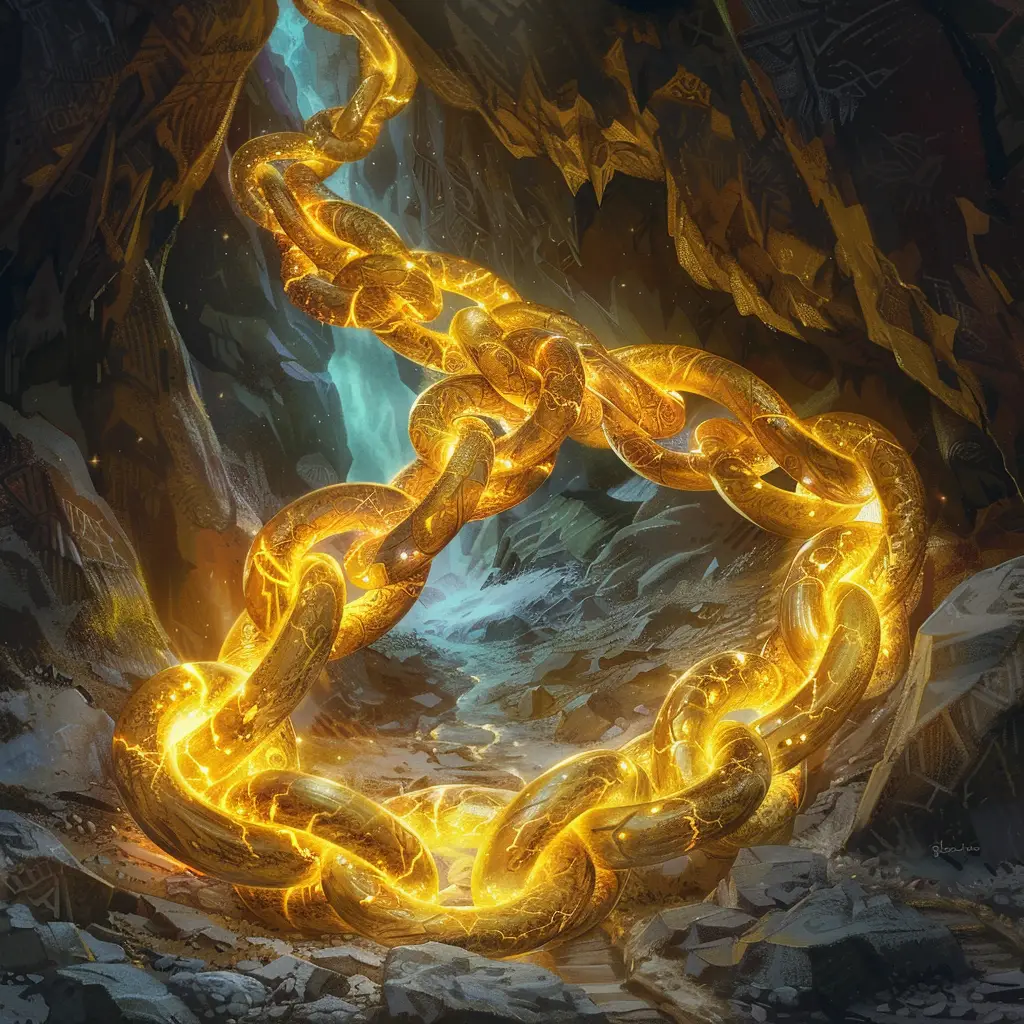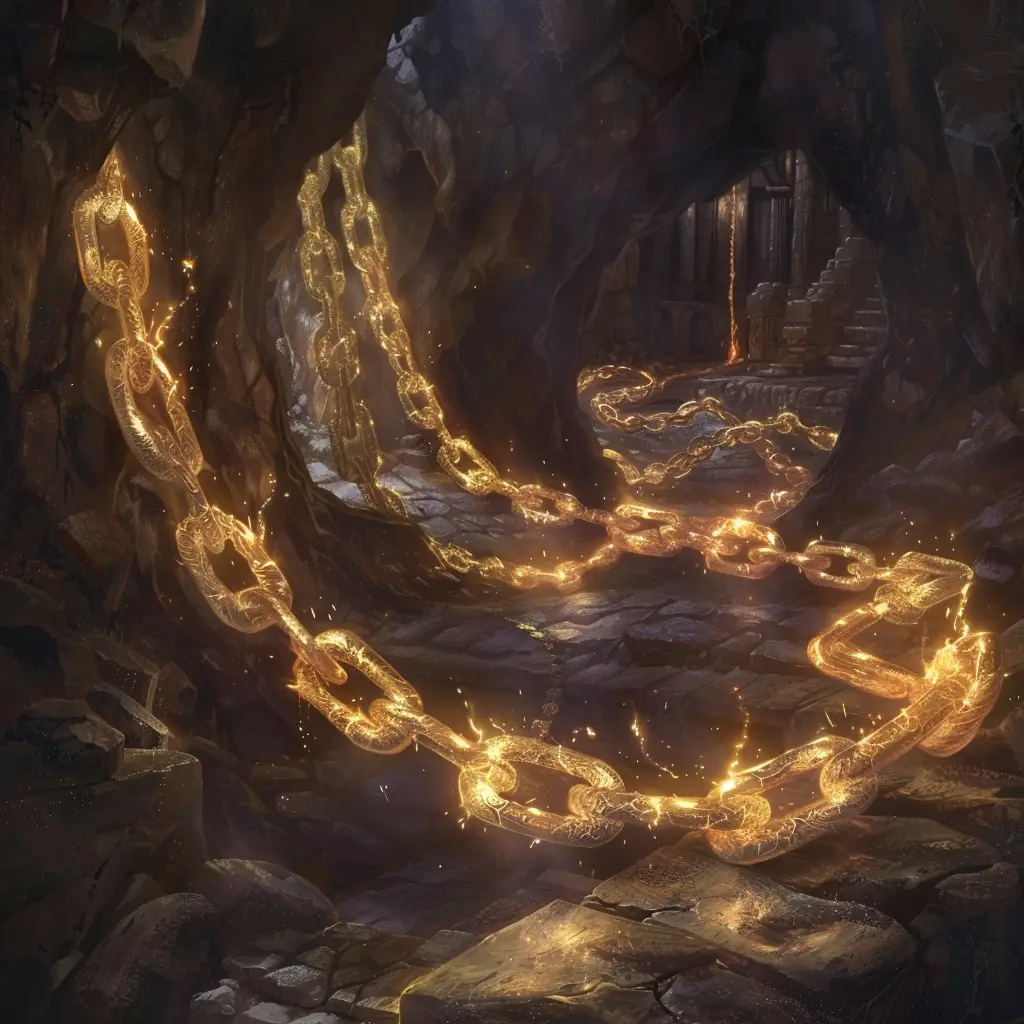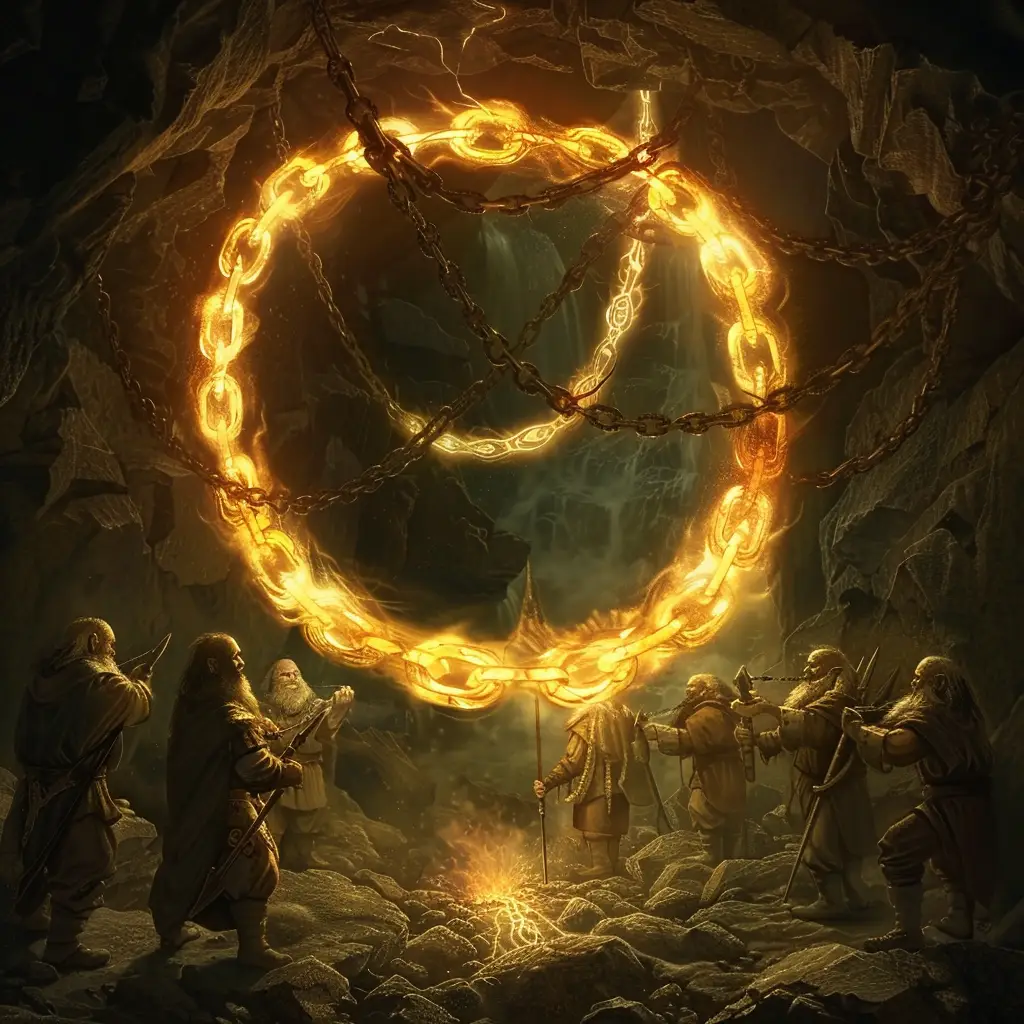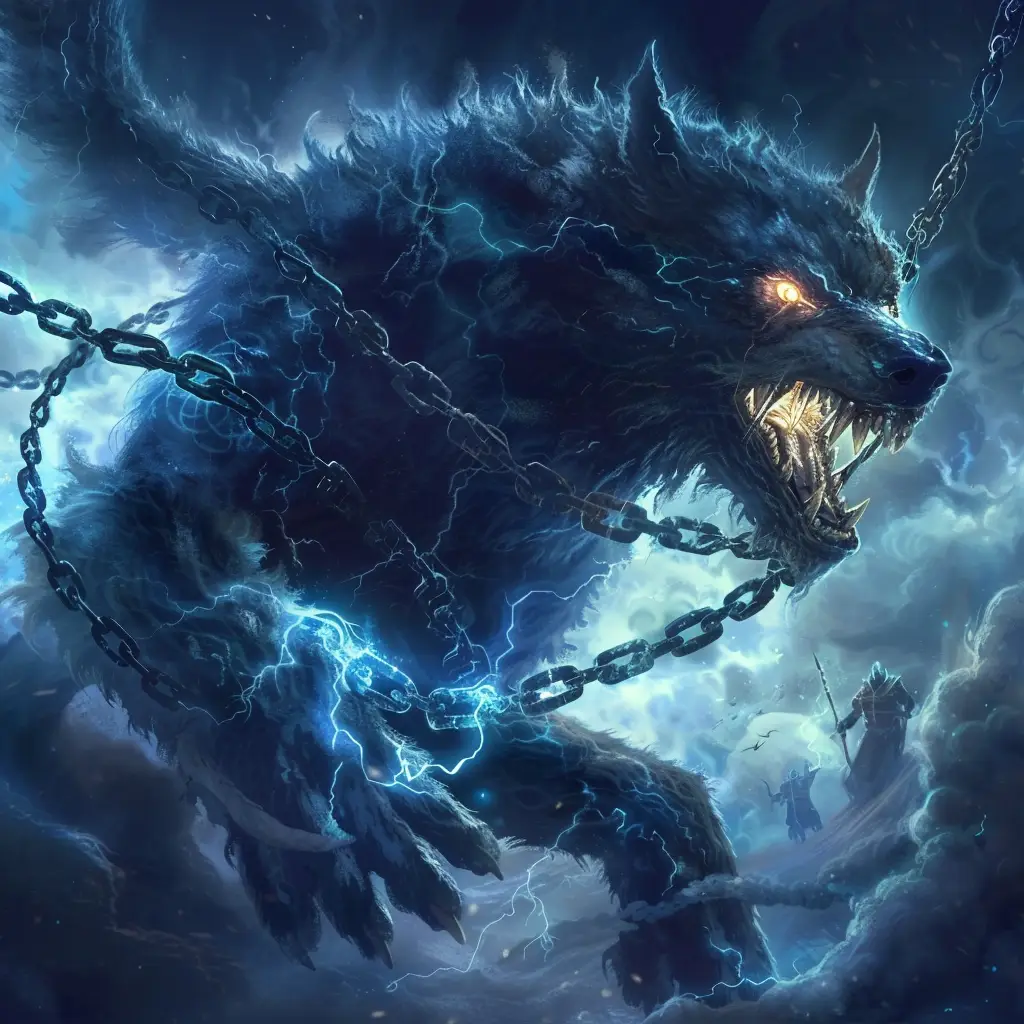Gleipnir is a significant artifact in Norse mythology, known for its role in binding Fenrir, the monstrous wolf, who is destined to play a crucial role in Ragnarök, the end of the world. Crafted by the dwarves, Gleipnir is renowned for its magical properties and the incredible craftsmanship that went into its creation.
Creation and Characteristics
Commissioned by the Gods:
The gods, aware of Fenrir’s prophesied role in their doom, sought a way to restrain him. Conventional chains had failed, as Fenrir’s immense strength allowed him to break free easily.
In response, they turned to the dwarves, who were master craftsmen capable of forging an unbreakable chain.
Crafted by the Dwarves:
Dwarves’ Craftsmanship: The dwarves are renowned in Norse mythology for their exceptional skill in crafting magical items. They created many powerful artifacts, including Thor’s hammer, Mjölnir, and the ship Skidbladnir.
Materials Used: The dwarves forged Gleipnir from six seemingly impossible ingredients, each contributing to its supernatural strength:
The sound of a cat’s footsteps: An elusive, intangible sound.
The beard of a woman: Something that does not naturally exist.
The roots of a mountain: Symbolizing an unmovable force.
The sinews of a bear: Representing immense strength.
The breath of a fish: An unseen, transient element.
The spittle of a bird: Another intangible substance.
These materials combined to create a ribbon-like chain that was paradoxically strong and light, embodying both the physical and the magical.
Physical Appearance:
Despite its incredible strength, Gleipnir appeared as a slender, silken ribbon. This deceptively delicate appearance belied its true power and unbreakable nature.
Role in Norse Mythology
Binding of Fenrir:
Deception and Trust: To bind Fenrir, the gods used deception. They presented Gleipnir as a test of strength, convincing the wolf that breaking it would demonstrate his power. Fenrir, suspicious of their intentions, agreed to the challenge only if one of the gods would place their hand in his mouth as a pledge of good faith.
Týr’s Sacrifice: Týr, the god of war and justice, bravely offered his hand. When Fenrir realized he had been tricked and could not break free, he bit off Týr’s hand in anger.
Bound and Restrained: With Gleipnir, the gods successfully bound Fenrir to a rock called Gjöll, and placed a sword in his mouth to keep it open, ensuring he could not cause further harm.
Ragnarök:
Prophecy: It was foretold that during Ragnarök, the final battle between the gods and the forces of chaos, Fenrir would break free from Gleipnir and bring destruction upon the world, ultimately killing Odin.
Symbol of Fate: Gleipnir’s role in restraining Fenrir underscores the theme of fate in Norse mythology, where even the gods’ attempts to alter their destinies are ultimately futile.
Symbolism and Themes
Dual Nature of Strength:
Deceptive Appearance: Gleipnir’s delicate form contrasts with its unbreakable strength, symbolizing the idea that true power can lie in unexpected places and forms.
Balance of Forces: The chain embodies the balance between the physical and the magical, the tangible and the intangible, reflecting the interconnectedness of different forces in the cosmos.
Fate and Destiny:
Inevitability: The creation and use of Gleipnir highlight the Norse belief in the inevitability of fate. Despite their efforts, the gods cannot escape their prophesied doom.
Role of Craftsmanship: The dwarves’ role in creating Gleipnir emphasizes the importance of skill and knowledge in shaping destiny, even if it cannot ultimately change the outcome.
Trust and Betrayal:
Gods’ Deception: The story of Gleipnir involves a complex interplay of trust and betrayal, with the gods’ deceit and Týr’s sacrifice showcasing the lengths to which they would go to protect their realm.
Týr’s Honour: Týr’s willingness to sacrifice his hand underscores themes of honour, duty, and the cost of upholding justice and order.
Gleipnir in Modern Culture
Literature and Media:
Gleipnir has inspired various interpretations in modern literature, games, and media, often serving as a symbol of binding power and the struggle against inevitable fate.
Examples: In fantasy novels and games, Gleipnir-like artifacts are often used to restrain powerful beings or as symbols of great craftsmanship and magical prowess.
Popular Culture:
Gleipnir’s concept has been adapted into many fantasy stories and media, where it is typically depicted as a chain or binding force with magical properties.
Symbolic Influence:
The story of Gleipnir continues to resonate as a metaphor for restraint, the balance of power, and the complexities of fate and destiny.



